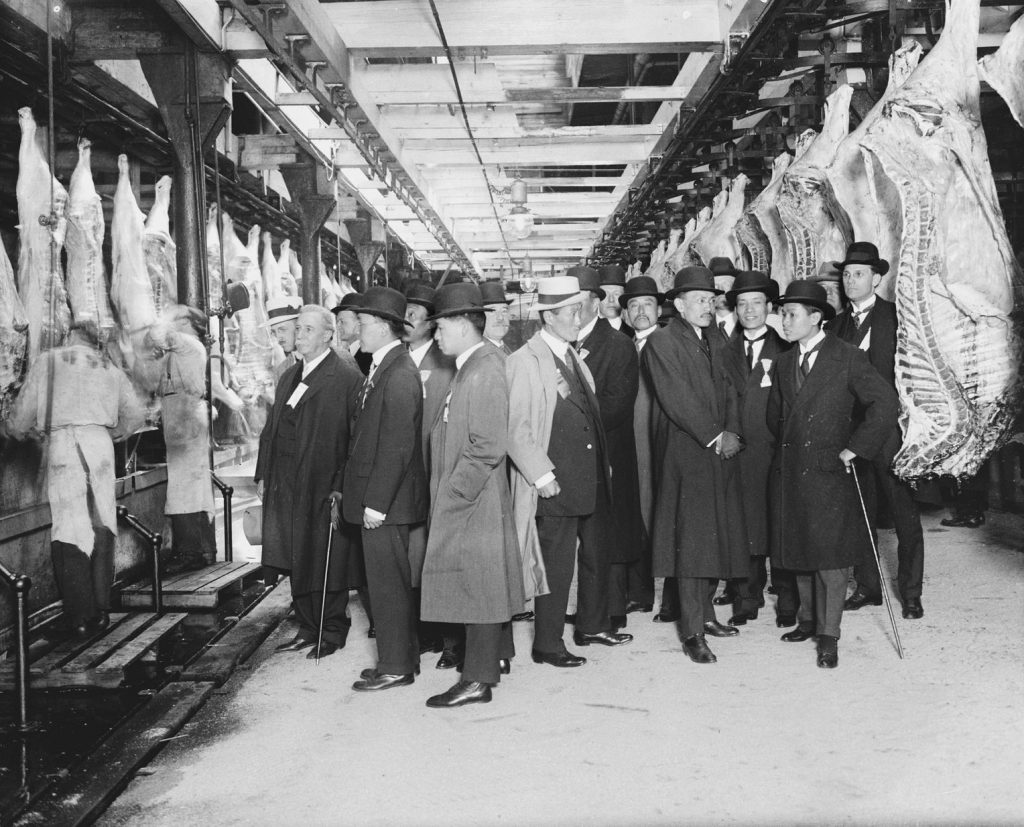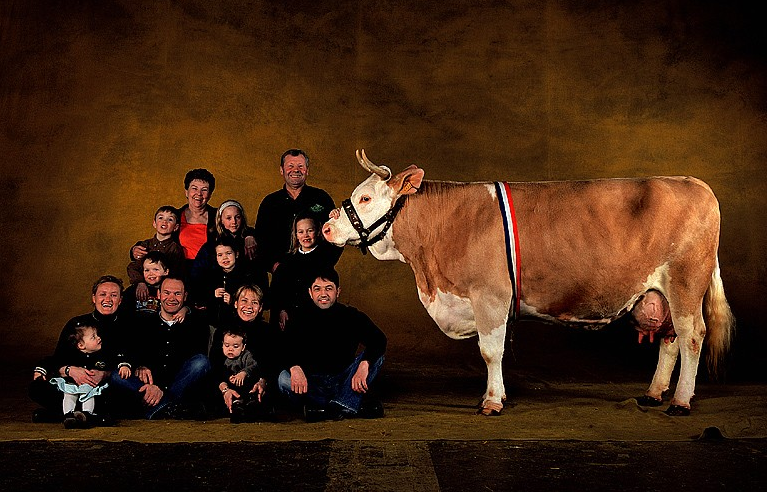When the Mexican-American War ended in 1848 and Mexico lost large parts of the country by treaty, the Rio Bravo was the new border. The United States now had large parts of the Great Planes and white settlers appropriated the land. They carried out ethnic cleansing and put the indigenous people on reservations. Bison herds were destroyed. The pastureland was given to the cattle breeders.
Ulysses S. Grant, who was the 18th President of the United States from 1869 to 1877, ruled: This war was "one of the most unjust war that has ever been waged by a stronger nation against a weaker". But this was how the merciless process could begin: Raising masses of cattle on the pastures of the Great Planes, impoverishing biodiversity, driving cattle to Chicago, slaughtering and sending them to different parts of the country.
Professional recruiters acquired workers in Eastern Europe on behalf of the great American meat barons known as the Big Four. Animals and humans were exploited in dire conditions.
This prompted the writer Upton Sinclair to write The Jungle. He got his information by sneaking undercover. He described the infernal noise, the screams of the tortured animals, the miserable life of workers in the factories. Child labor was the norm, as were mutilations and deaths from infections. Many publishers refused to publish it and the meat industry called the information fictional and a lie. But a publisher put it out in 1906 after the content was verified. It became a bestseller and was translated into 17 languages within a few months.
The outrage and disgust of Americans after the book was published were so enormous that President Roosevelt was forced to pass sanitary and consumer protection laws. However, "Teddy" Roosevelt insulted the writer and other socially critical colleagues as Muckraker (dirt-agitator). Well, dirt can only be stirred up if there is any.
Apparently, animal welfare and exploitation did not matter to people. They just didn't want to consume cheap meat that contained mold, rat droppings, and rotten leftover meat. However, the exploitation of the workers and the death of the animals remained the same. Sinclair said: "I aimed at the hearts of my readers and accidentally hit their stomachs."

Unknown photographer: Chinese delegation, 1915 © Chicago History Museum
Interested people from all over the world traveled to Chicago to learn about systematized industrial killing. A Chinese delegation in 1915 as well as the German Karl-Ludwig Schweisfurth in the 1950s.
The heir to a butcher's shop imported this method of production to Germany at the age of 25 and built up the largest meat-processing company in Europe.
A leap in time to the crisis year 2020:
- Inadequate stunning of animals in slaughterhouses,
- castration of young animals without anesthesia,
- problems with hygiene,
- now, as then, dumping workers from Eastern Europe who have to live together in dwellings that are unworthy of life
everything subordinated to the cheap mania and the greed for cheap meat.
What has really changed since Chicago 150 years ago? You get the impression: not much. The Süddeutsche Zeitung wrote in 2013: “What happens in slaughterhouses is, for many critics, more than exploitation. We're talking about about human trafficking and organized crime.“ Sinclair's Jungle is apparently an permanent reality.
Respect and regard in dealing with animals and plants, seems to be the only way today already out of pure, egoistic will to survive. And we decide in everyday life by our purchase and eating behavior with on the future of the life on land.

Yann-Arthus Bertrand: People and their Animals © Yann-Arthus Bertrand
Bertrand,born in Paris in 1946, is a French photographer, journalist, reporter and environmentalist. He became internationally known for his spectacular aerial photographs and his UNESCO-sponsored project The earth from above among other things.